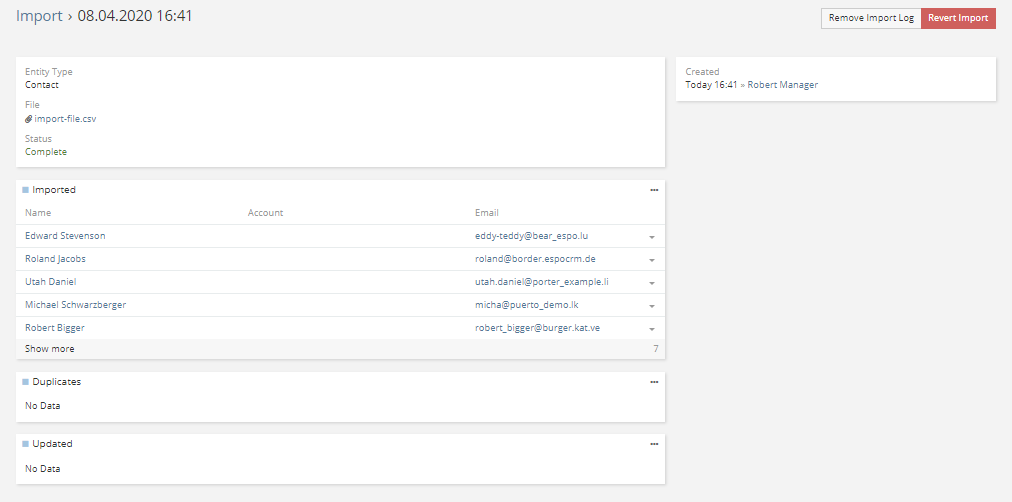Exporting data from Zurmo CRM
Zurmo CRM is a gamified CRM solution that was designed to meet the needs of small businesses and make the process of software adoption smoother for the end-users. However, with the growth of your company, you may find yourself in a situation when your business outgrew its functionality. So, if you want to switch to another application or need to make a backup of your CRM data, you may need to export data from Zurmo. Here’s a simple, step-by-step guide on how to do it.
To start extracting data from Zurmo CRM, navigate to the Contacts module.
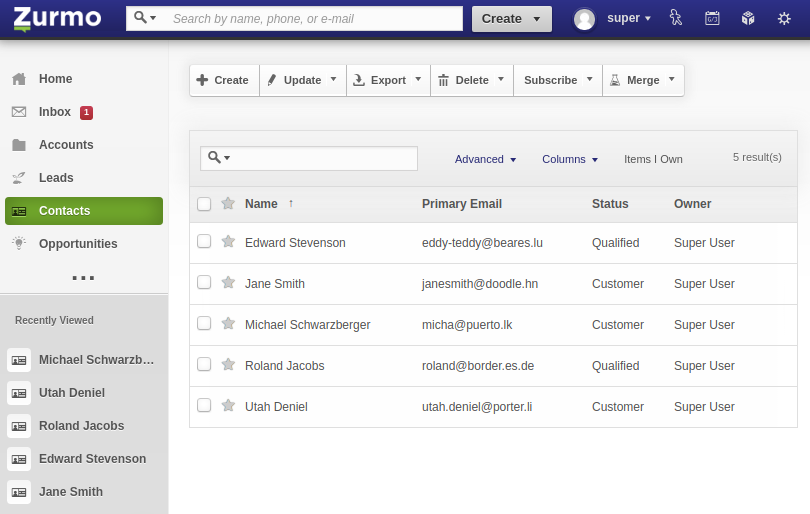
Then, click the Export dropdown. The platform allows you to export either Selected records only or all contacts – All Results option. Choose the suitable option and save the CSV file with contact data to your computer.
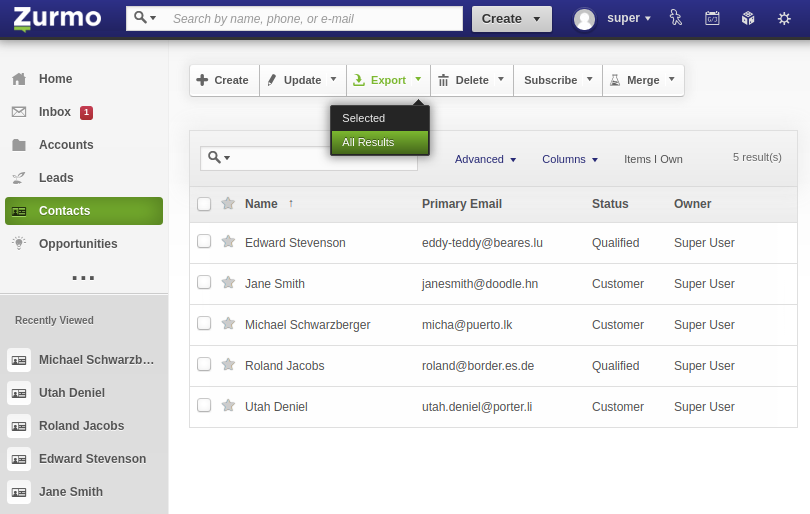
In case you want to extract only certain records (e.g. the records created on a certain date or by a certain user), you can select them manually by ticking the needed contacts or use Advanced search > Add criteria > Select the fields to filter records automatically > click Search.
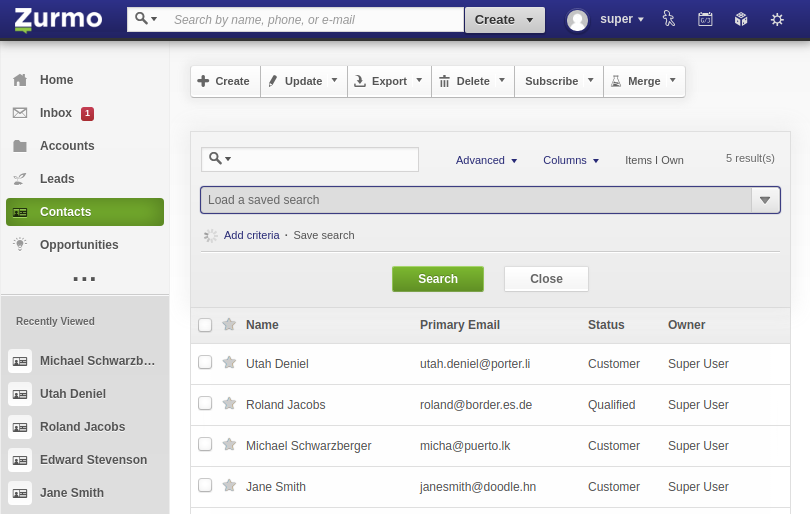
When the list of records is ready, press the Export dropdown > choose Selected option > save the CSV file to your computer.
All trademarks belong to their respective owners.
Importing data into EspoCRM
As soon as you have the export file with customer data, you can start importing it into your EspoCRM instance. The system allows you to import information in CSV file format.
In order to migrate data, at first navigate to Administration and click Import in Data section. The import process happens in three steps. Let’s dive in and take a closer look at each step.
Step 1
The first thing to do here is to determine the type of records that are going to be imported. In this case, select Contacts from the Entity Type list. Then, click Choose File and upload the CSV file you’ve exported from your previous CRM system. The next stage is to decide what should be done with the imported records. In What to do? section, there are 3 options “Create Only”, “Create & Update”, “Update Only” that allow both to create new records and update the information in the existing ones if you used CRM systems simultaneously.

Once you’ve finished with the previous configurations, you can proceed to define the import properties. Select the correct field delimiter, text qualifier, and format for person name, date, time, timezone and currency. If you’re importing a large amount of data, it’s better to tick off Execute in idle. You can also Skip searching for duplicates to make the execution of import faster if you’re sure that there’re no duplicated contacts. The Silent mode option allows to skip most of after-save scripts and workflows, which also increases the speed of import. In the Preview panel, you will be able to see how the data will be parsed. When you change properties, the preview is updated. If everything is correct, click Next and proceed to Step 2.
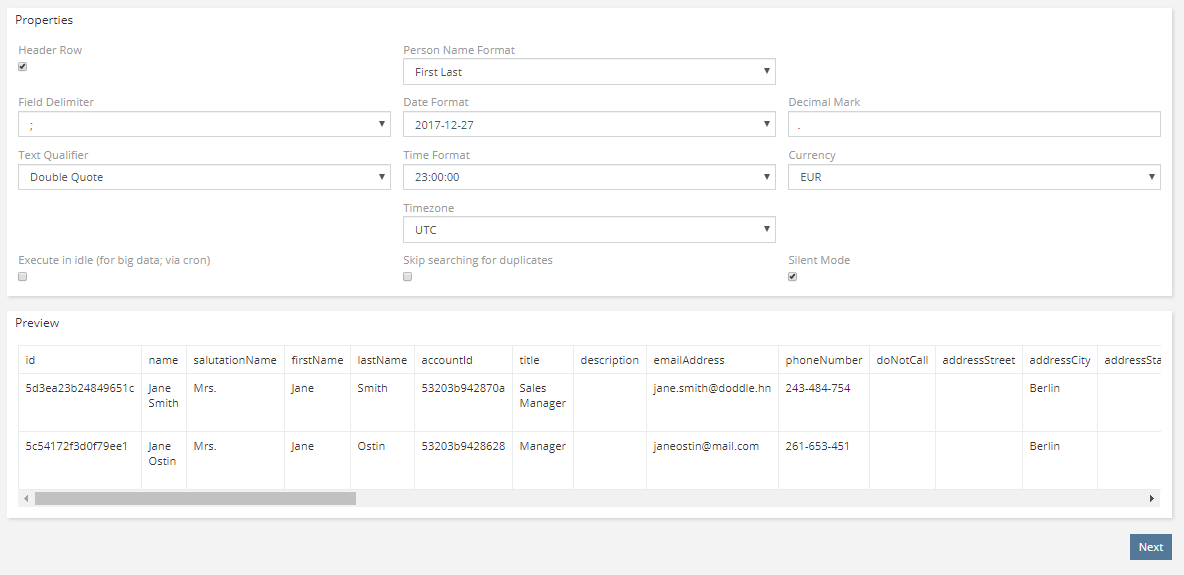
Step 2
Field Mapping panel shows how fields correspond to columns of the CSV file. You can skip importing not needed columns here by choosing the Skip option from the list. If you chose not only to create but also to update records, you will need to tick off fields by which the system will match the records that should be updated. In the Default Values section, you can add fields to the imported records, which is useful, for example, if you want to assign them to a particular user or team. Once everything is configured here, click Run Import and proceed to Step 3.
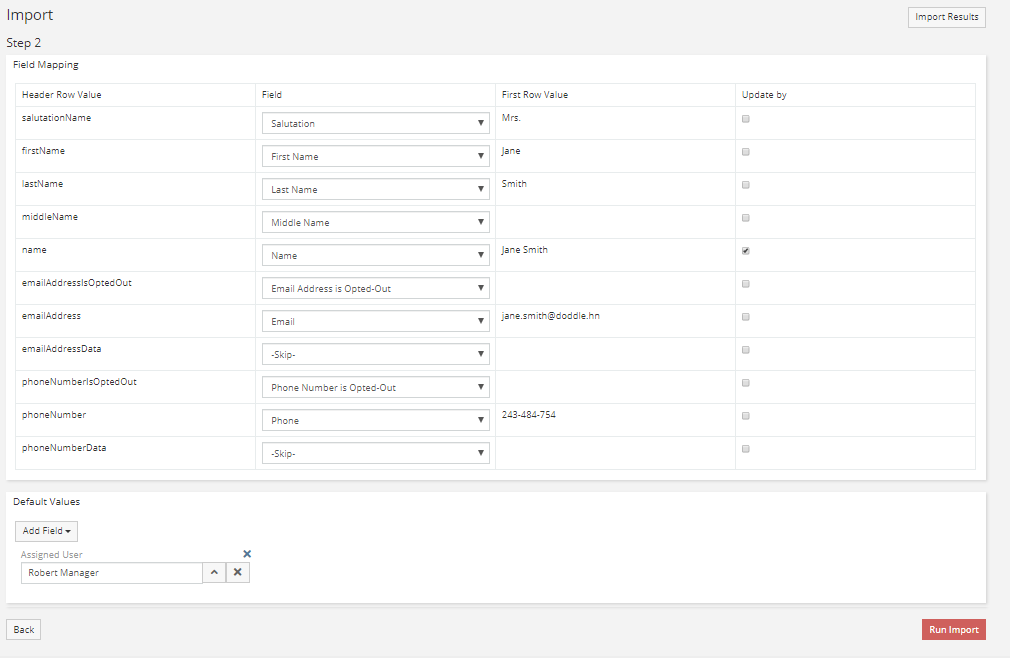
Step 3
At this point, you can see the list of imported, updated and duplicated records. Now you can check if the imported data is correct and Remove Import Log to prevent an accidental reverting of the import. If there are some issues with fields in the imported records, you can Revert import and try again.
